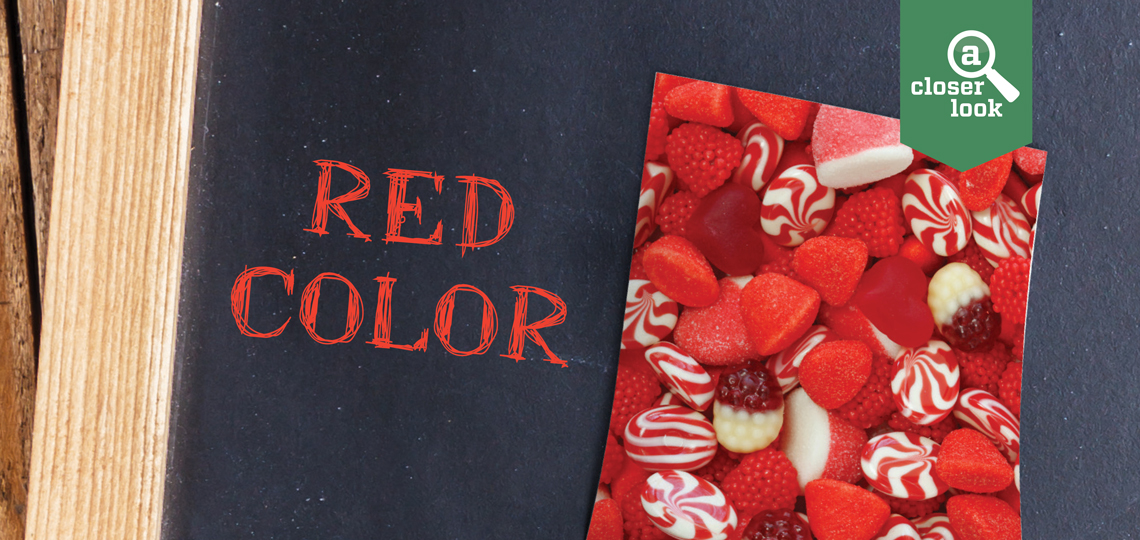What is Red Color?
Food coloring is used to make food products more attractive and appealing and, often, to offset discoloration due to processing or storage conditions.
Red color is the most popular food coloring. It is used in dairy products, processed meats, salad dressings, baked goods, candies and many other foods and beverages.
The most commonly used red color in the USA is Red 40 (Allura Red AC). Manufacturers prefer to use Red 40 due to its availability, low cost and extended shelf life. Most importantly, Red 40 is a stable color because it does not fade easily due to acidity/pH levels or hot processing temperatures in the manufacturing process.
Due to debates regarding potential behavior and health risks associated with Red 40, manufacturers are seeking alternative options.
Carmine (cochineal) color is the most used natural red color. Manufacturers like to use it because it is a natural and stable red color solution. Carmine color, while natural and stable, is not a perfect solution since it is derived from insects, which makes it non-kosher, non-vegan, and not appealing to many consumers who don’t like to consume insect byproducts.
The best natural red color is derived from fruits and vegetables, such as black carrots, grapes, beets and sweet potatoes. However, the fruit and vegetable colorings are generally not stable and fade during the manufacturing process. Manufacturers are constantly working on ways to improve the stability of these colors.
How is Red Color Made?
RED 40 is made by reacting petroleum byproducts with other chemicals in a series of steps. The coloring results are then purified and sold as Red 40.
CARMINE COLOR is made from cochineal beetles that are collected in South America, killed and dried. The dried insects are then crushed and mixed with hot water and chemicals to make carminic acid which is further processed and purified with alcohol and other additives to make cochineal extract and carmine color.
FRUITS & VEGETABLES are crushed and enzymes are typically added to aid in extracting all the juices. The solids are then removed and the juices are filtered and evaporated to make the concentrate. Often, additives are added to make the color more stable and to better mix into products.
The colors can be sold as a liquid or as a spray dried powder.
Is Red Color Kosher?
Red 40 is made from ingredients that do not pose any kashrus concerns in their pure forms. Any additives need to be monitored to verify the kosher status.
Carmine is derived from dried insects. While there are minority opinions that hold that carmine can be considered kosher, it is not the generally accepted kosher practice. OK Kosher considers carmine not kosher.
Fruits and vegetable are inherently kosher with the exception of grapes and produce from Israel, both of which require special kosher supervision. Another concern is the additives that are typically added to the juices. In addition, there can be kosher concerns even with innocuous produce, because manufacturing equipment can be shared with non-kosher products and therefore needs to be supervised. This is especially true if the products are dried, because spray driers are expensive pieces of equipment and companies do not want them to sit idle.
There are exciting developments in the red color industry from OK-certified color manufacturer Chr. Hansen. They are currently working on producing a synthetic carminic acid via fermentation (micro-organisms will be fed with carbohydrates and other additives and metabolize them into carminic acid). They are hoping to produce this product as kosher and have it available on the market within the next few years. This will be a revolutionary natural and kosher stable red color option.
Rabbi Hendel is a member of the OK Kosher Vaad HaKashrus.


 EN
EN  ZH
ZH  KR
KR  BR
BR  ES
ES  IN
IN  IL
IL 




